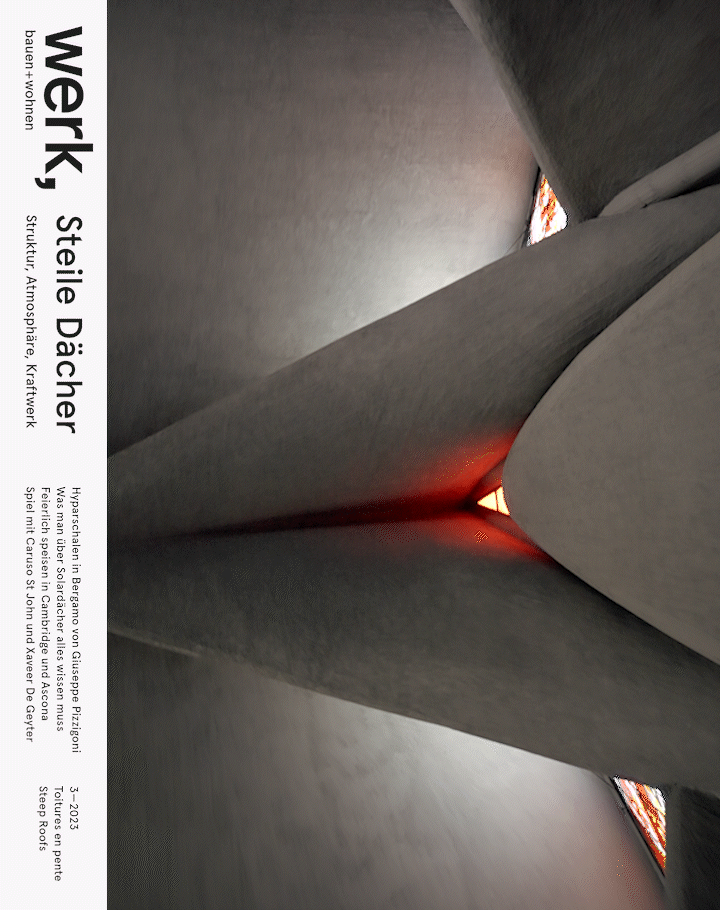werk, bauen + wohnen 3 – 2023

Between Building and Sky
Who can still remember a visit to an unheated attic space? And the slight tingling in the tummy caused by the chilliness, the cramped feeling, the low amount of light and the smell of dust? Perhaps this attic has in the meantime been converted, the new insulating material concealed behind sheets of plasterboard. Apart from a few visible timber beams, the atmosphere today seems sober. And yet most such spaces remain enough roof, to feel protected beneath.
Perhaps it is the increasing shortage of elementary experiences which has led to cosy spaces under a sloping roof to become more popular as a design topos than almost ever before. In this issue we do not however present attic conversions as these have already been dealt with in the issue on the theme of Adding Floors (cf. wbw 1/2– 2017). This time our focus is in the roof spaces between the building and the sky. We found these in Cambridge in a college space by Feilden Fowles or in the Überdach by Atelier Bermuda near Geneva. The former is spart of a long
tradition of representative halls and archaic primal images of closed communities in a tent-like building. The latter is a pragmatic material protection against the elements for a artists colony and its community, a protective space, a barn. The roofs of Giraudi Radczuweit in Ascona and by Giuseppe Pizzigoni around Bergamo take a further path: they are all developed from geometry and less from the tradition of a framework (even though in Ascona large trusses are hidden behind fabric).
Some of the pitched roofs shown in this issue are high-performance in the sense that optimized materials can be used to span a large, (mostly) communal space, or high-performance in that energy is extracted from the roof mem brane. They all use the formal potential of the closure for the space towards the sky and enable it to be experienced, always with the expertise of engineers. Atmosphere is so to speak automatically included. In this issue we plea for greater depth in the construction. — Tibor Joanelly, Roland Züger